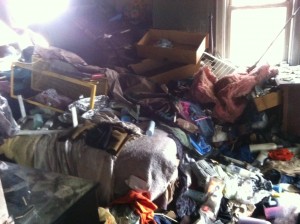
Hoarding is a disorder that causes the afflicted to be very reclusive. This behavior is attributed to many factors such as embarrassment, shame, and/or guilt as they understand that they have a compulsion to collect things, many that have no apparent value. This reclusive nature can make a person not allow anyone, including family members, to enter their house. Behavior like this can continue until outside help is needed, often the fire department.
Hoarding has many dangers associated with it that include biohazards, fall hazards, insect or rodent infestations, and general poorly maintained structural conditions. This problem can go unnoticed or untouched for years until the occupant has an emergency then it is our problem to deal with.
Let us review some key points of Hoarding Response:
- If you see something, say something
- Size up of the structure as you approach
- Carry respiratory protection, even on medical runs
- Don’t be afraid to “back the truck up” and get help
Just like Jakes experience, we often find ourselves deep into a structure before we identify these conditions. This can be dangerous to our health and safety. Carrying an n95 respirator may be required as we face these conditions more often. High ammonia levels mixed with mold are just two of the dangers that we face inside a hoarding condition. They both carry serious health effects with them. It is time for us to “back the truck up” and protect ourselves from the dangers of Hoarding.
This starts with identifying and reporting hazardous houses to our fellow members. Without giving out private information, anything that violates HIPPA, we should identify these homes and have them flagged as dangerous. Allowing every member to report, these conditions will help spread the word and give us time to prepare for the hazards we will face! If you respond to a hoarding condition, allow yourself some extra time to add the proper level of PPE. Their hoarding took years to accumulate, allow you enough time to make sure we all go home!













